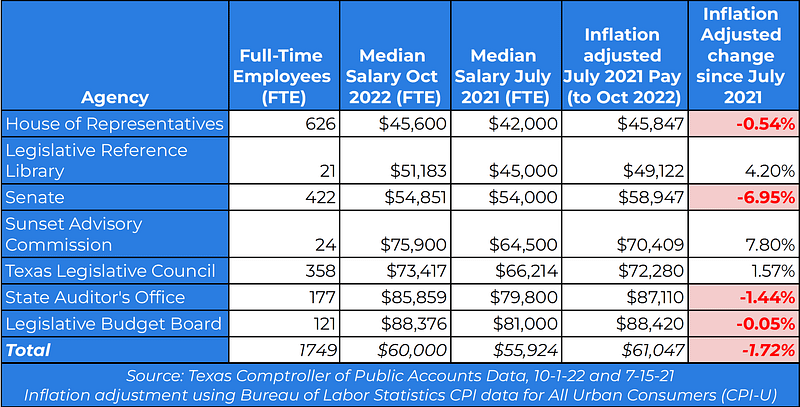A look at Texas’ historic revenue estimate and $32.7 billion budget surplus
This is a preview of our Texas 2036 newsletter about the recent announcement of Texas’ historic budget estimate. To receive this weekly highlight of our work, sign up here.

The 88th Texas Legislature convened this week following Monday’s historic Biennial Revenue Estimate announcement. Here’s why this budget matters.
A Historic Revenue Outlook 💸
The BRE: Texas’ Biennial Revenue Estimate sets out how much funding is available for state budget writers to spend.
- During the legislative session, lawmakers then use these parameters to decide where and how much of taxpayer dollars to allocate.
By the Numbers: On Monday, Texas Comptroller Glenn Hegar shared his projection for the 2024-25 biennium budget cycle:
- $188.2 billion: General revenue available for the state
- 26% increase: Additional amount from the last budget cycle
- $32.7 billion: Budget surplus expected by the end of fiscal year 2023
The Big Takeaway: Texas’ record-breaking revenue growth has led to a once-in-a-generation opportunity to tackle big projects for the state.
- While the figures are exciting, prudent spending is key. Plus, there are spending limits in place.
👉 Get a refresh: Investments for lasting change

All In: Policy team members Rahul Sreenivasan, Hope Osborn and Renzo Soto attended the Comptroller’s conversation with the Texas Tribune following his BRE announcement on Monday.
- Texas 2036 will continue to closely track how this Legislature plans to leverage this remarkable budget.
What to Know: With the Legislature in session, here are five key takeaways to keep in mind as lawmakers start making hard decisions about the budget.
- Revenue growth was fueled by unprecedented sales tax collections
- Predictions are subject to change
- An economic cooldown is expected
- Caution could be warranted given the uncertain outlook
- There’s opportunity for one-time, generational investments
👉 Dive deeper: Texas’ historic revenue outlook: 5 takeaways
Improving Legislative Staff Salaries 💡
A Look Back: During the special legislative sessions of 2021, we came out in support of increasing wages for historically underpaid legislative staff.
- Our analysis on Article X—the section of the Texas budget covering legislative agencies—illustrated just how far behind the legislative employees’ salaries had lagged in the Austin area.
Time to Act: While the Legislature took up some of the concerns, many of the underlying issues were left unaddressed.
- With high inflation increasing costs of living in Texas, especially in Austin, we are highlighting legislative compensation again with updated numbers.

Making Progress: This week, the Senate adopted a significant wage increase to help members so they can retain experienced staff. Senate office budgets, which include both salaries and travel, were increased 46%—growing from $41,000 per month to $60,000.
- The House is scheduled to adopt its office budgets today. The proposal increases budgets by 13% during the legislative session—from $15,250 to $17,250. If approved, this will address recent inflation.
Worth Noting: Senate offices typically have larger staffs with correspondingly bigger office budgets to reflect their constituencies.
👉 Take a look: “Improving legislative staff salaries is a wise investment”
Texas 2036 In the News 🗞️

Watch: Senior Vice President of Policy and Advocacy John Hryhorchuk onState of Texas with KXAN’s Josh Hinkle.
- He discussed prioritizing higher pay for state employees, addressing our state’s aging water infrastructure, restructuring community college finance so more Texans can achieve the skills they need and more.
Read: Policy Advisor Rahul Sreenivasan talked to Bob Garrett with The Dallas Morning News.
- When it comes to Texas’ budget surplus, he said, “This is a session where [lawmakers] are going to have a hard time dealing with all the different asks that are there.”
 Have a little fun, Texas:
Have a little fun, Texas:
Where would you spend the $33 billion budget surplus?
